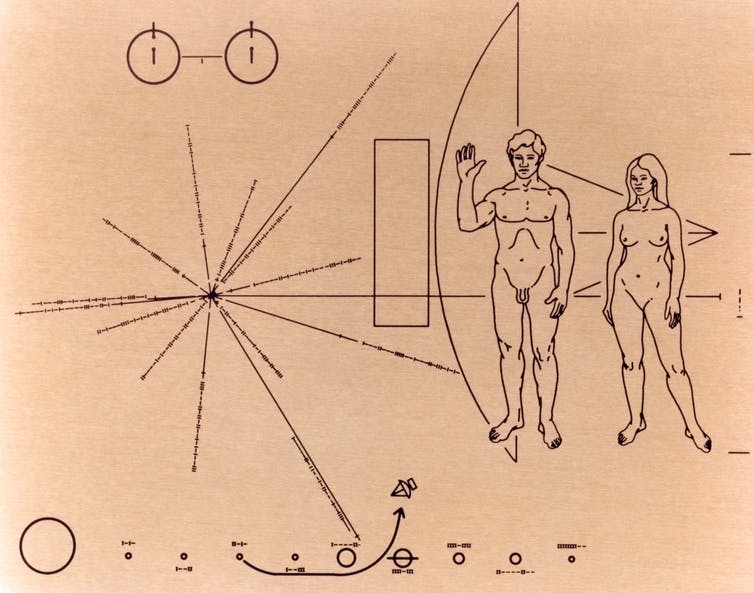If a person is lost in the wilderness, they have two options. They can search for civilization, or they could make themselves easy to spot by building a fire or writing HELP in big letters. For scientists interested in the question of whether intelligent aliens exist, the options are much the same.
For over 70 years, astronomers have been scanning for radio or optical signals from other civilizations in the search for extraterrestrial intelligence, called SETI. Most scientists are confident that life exists on many of the 300 million potentially habitable worlds in the Milky Way galaxy. Astronomers also think there is a decent chance some life forms have developed intelligence and technology. But no signals from another civilization have ever been detected, a mystery that is called “The Great Silence.”
While SETI has long been a part of mainstream science, METI, or messaging extraterrestrial intelligence, has been less common.
I’m a professor of astronomy who has written extensively about the search for life in the universe. I also serve on the advisory council for a nonprofit research organization that’s designing messages to send to extraterrestrial civilizations.
In the coming months, two teams of astronomers are going to send messages into space in an attempt to communicate with any intelligent aliens who may be out there listening.
These efforts are like building a big bonfire in the woods and hoping someone finds you. But some people question whether it is wise to do this at all.

The Pioneer 10 spacecraft carries this plaque, which describes some basic information about humans and the Earth.
Carl Sagan, Frank Drake, Linda Salzman Sagan, NASA Ames Research Center via WikimediaCommons
The history of METI
Early attempts to contact life off Earth were quixotic messages in a bottle.
In 1972, NASA launched the Pioneer 10 spacecraft toward Jupiter carrying a plaque with a line drawing of a man and a woman and symbols to show where the craft originated. In 1977, NASA followed this up with the famous Golden Record attached to the Voyager 1 spacecraft.
These spacecraft – as well as their twins, Pioneer 11 and Voyager 2 – have now all left the solar system. But in the immensity of space, the odds that these or any other physical objects will be found are fantastically minuscule.
Electromagnetic radiation is a much more effective beacon.
Astronomers beamed the first radio message designed for alien ears from the Arecibo Observatory in Puerto Rico in 1974. The series of 1s and 0s was designed to convey simple information about humanity and biology and was sent toward the globular cluster M13. Since M13 is 25,000 light-years away, you shouldn’t hold your breath for a reply.
In addition to these purposeful attempts at sending a message to aliens, wayward signals from television and radio broadcasts have been leaking into space for nearly a century. This ever-expanding bubble of…



